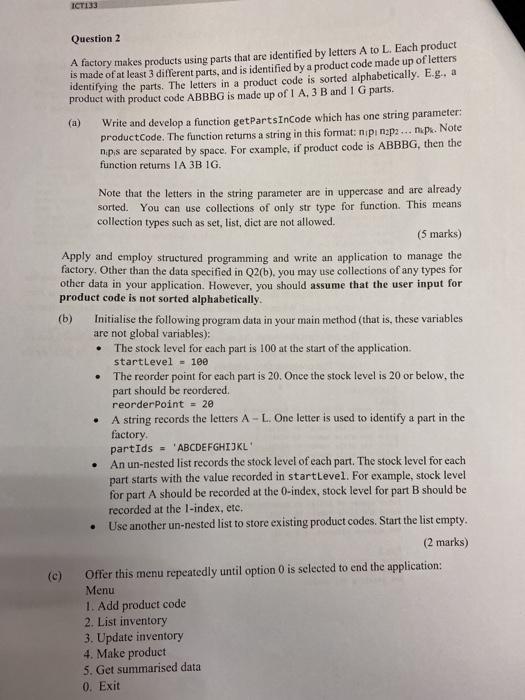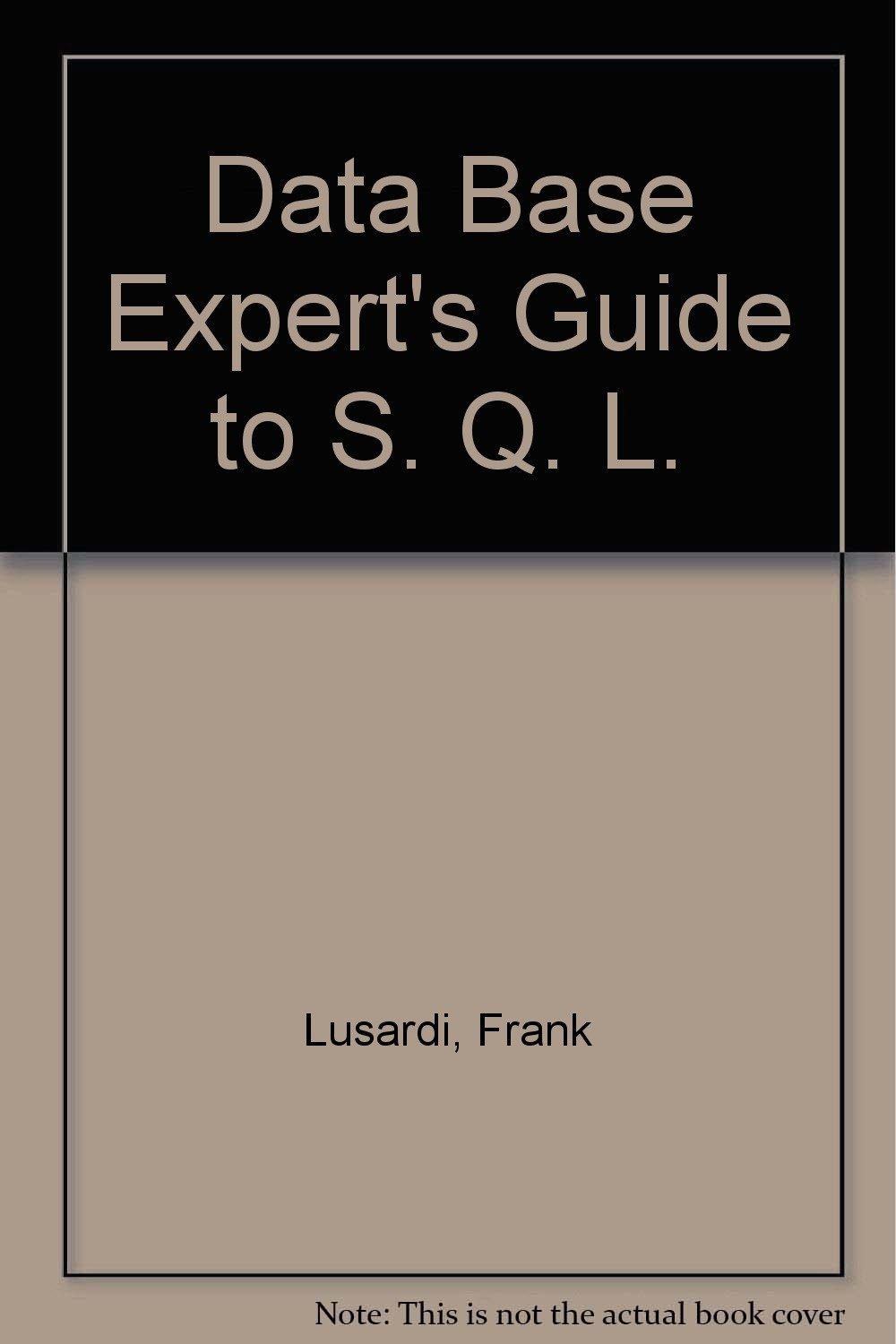ICTI33 Question 2 A factory makes products using parts that are identified by letters A to L. Each product is made of at least 3 different parts, and is identified by a product code made up of letters identifying the parts. The letters in a product code is sorted alphabetically. E.... a product with product code ABBBG is made up of 1 A, 3 B and IG parts. (a) Write and develop a function getPartsInCode which has one string parameter: product Code. The function returns a string in this format: nipi nap2 ... nupi. Note nps are separated by space. For example, if product code is ABBBG, then the function retums IA 3B 1G. . Note that the letters in the string parameter are in uppercase and are already sorted. You can use collections of only str type for function. This means collection types such as set, list, dict are not allowed. (5 marks) Apply and employ structured programming and write an application to manage the factory. Other than the data specified in Q2(b), you may use collections of any types for other data in your application. However, you should assume that the user input for product code is not sorted alphabetically (b) Initialise the following program data in your main method (that is, these variables are not global variables): The stock level for each part is 100 at the start of the application startLevel = 102 The reorder point for each part is 20. Once the stock level is 20 or below, the part should be reordered. reorderPoint = 20 A string records the letters A-L. One letter is used to identify a part in the factory. partIds = 'ABCDEFGHIJKL An un-nested list records the stock level of each part. The stock level for each part starts with the value recorded in startLevel. For example, stock level for part A should be recorded at the O-index, stock level for part B should be recorded at the l-index, etc. Use another un-nested list to store existing product codes, Start the list empty. (2 marks) Offer this menu repeatedly until option is selected to end the application: Menu 1. Add product code 2. List inventory 3. Update inventory 4. Make product 5. Get summarised data . 0. Exit







